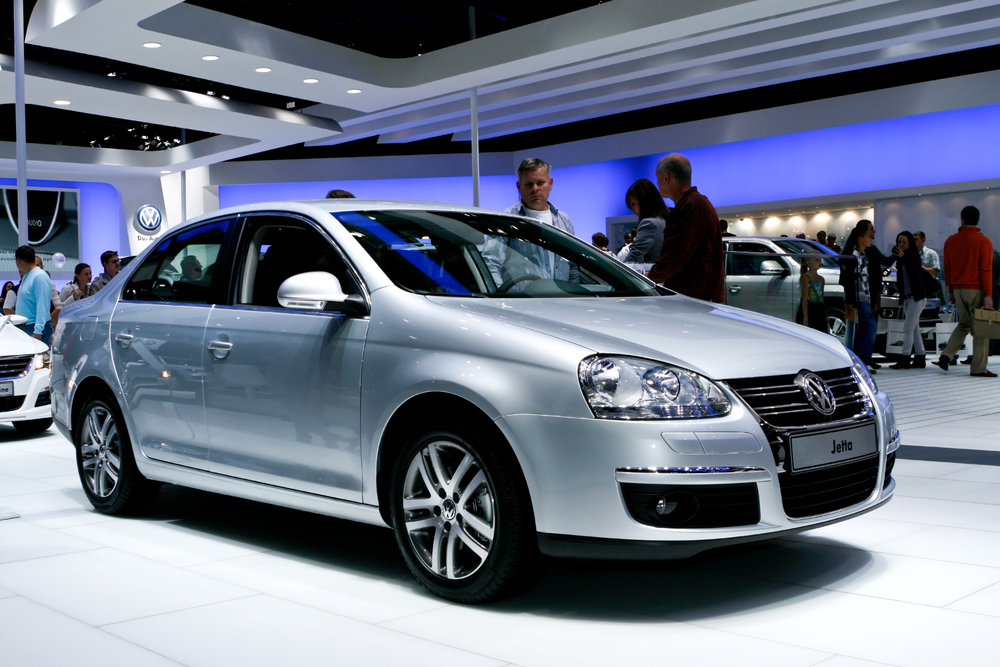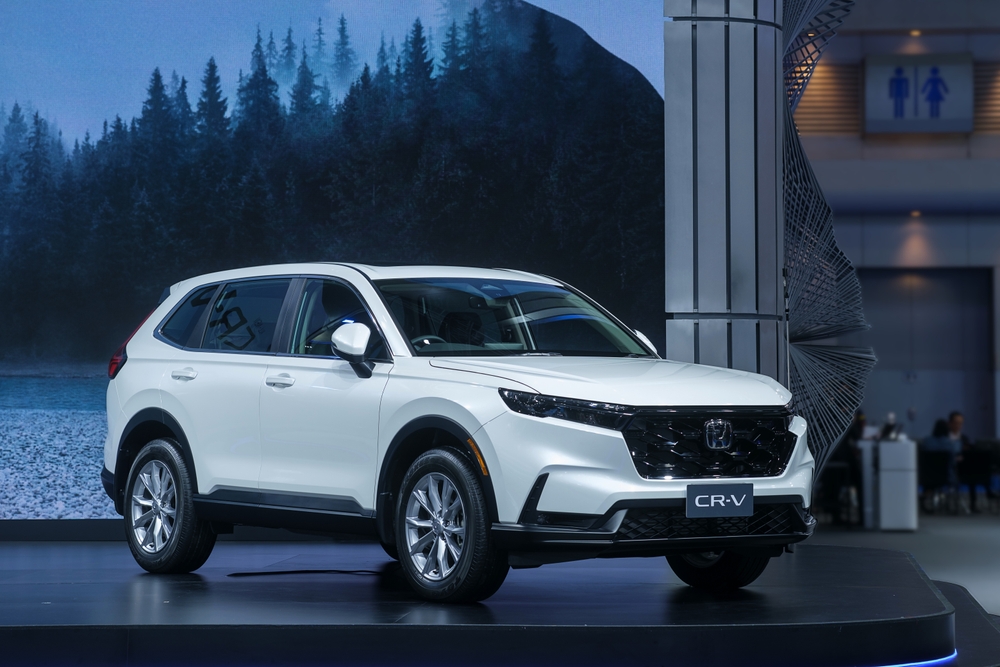When it comes to driving, reliable brakes are essential for safety and performance. Unfortunately, not all brake systems live up to the expectations set by manufacturers or drivers. In this article, we’ll look at 20 brake systems that fall short, covering common issues like reduced stopping power, excessive wear, and lack of responsiveness. Knowing which systems underperform can help you make more informed choices and avoid potential safety risks on the road.
Contents
Toyota Prius OEM Brakes

The Toyota Prius’s stock brakes often face early wear issues, especially when the vehicle is loaded or driven in hilly areas. This wear compromises the Prius’s braking power and efficiency. Despite its reputation as a reliable, eco-friendly car, the Prius’s brake pads and rotors are known to require replacement more frequently than other vehicles in its class. These factors make it challenging for drivers to achieve confident stops, particularly in emergency situations or with added weight.
Honda Civic Hybrid Brakes

Honda Civic Hybrid brakes frequently receive criticism for inconsistent pedal feel and premature wear. This inconsistency can make it hard for drivers to predict stopping distances. Additionally, the brake pads on the Civic Hybrid often wear out sooner than expected, leading to increased maintenance costs. The design doesn’t fully support regenerative braking demands, which is critical for hybrids, contributing to its underwhelming performance.
Ford F-150 Stock Brakes (older models)

The Ford F-150’s factory brakes, especially in older models, are prone to rapid fading under towing conditions, a major drawback for this popular pickup. The brakes often wear out prematurely, requiring more frequent servicing. While the truck’s powertrain can handle heavy loads, the brakes lag in performance, which raises safety concerns, particularly on long downhill grades.
Dodge Ram 1500 OEM Brakes

Known for low heat resistance, the Ram 1500’s OEM brakes are quick to fade under heavy braking. This issue is especially apparent during towing or driving in mountainous regions, where higher temperatures are common. The lack of robust heat dissipation leads to a decline in braking power, creating safety concerns and making it challenging to manage stops under stress.
Chevrolet Silverado 1500 Factory Brakes

The Chevy Silverado 1500’s brakes are often reported to underperform when carrying heavy loads or braking frequently. The factory brakes wear down quickly, leading to longer stopping distances. This makes them unreliable for drivers who use the Silverado as a work truck or tow frequently, as the braking system isn’t up to par with the vehicle’s rugged demands.
BMW 3 Series OEM Brakes (pre-2015)

Brakes on the BMW 3 Series pre-2015 models are notorious for producing high levels of brake dust and wearing down quickly. This results in frequent maintenance and a diminished aesthetic, as the wheels constantly appear dirty. Though known for their sporty handling, these BMWs lose some appeal when it comes to predictable, long-lasting braking performance.
Tesla Model S Regenerative Brakes

Tesla Model S’s regenerative braking system can cause uneven stopping power due to its switch between regenerative and friction braking. This can make it difficult for drivers to manage stops precisely, especially in emergency situations. While designed to improve efficiency, the inconsistency affects the braking experience and raises concerns regarding predictability and reliability.
Volkswagen Jetta OEM Brakes (pre-2019)

The Volkswagen Jetta’s brakes in pre-2019 models suffer from a lack of initial bite, making them feel sluggish. This can be frustrating and alarming for drivers who expect a quicker response. Additionally, the pads wear quickly, leading to frequent replacements and additional maintenance costs, impacting the overall ownership experience.
Nissan Altima Stock Brakes

The Nissan Altima’s stock brakes often wear quickly and lose effectiveness over time. This deterioration is notable in high-mileage Altimas, leading to longer stopping distances and decreased driver confidence. Owners frequently cite the need for earlier-than-expected brake pad replacements, which can add up in terms of time and cost.
Jeep Wrangler Stock Brakes

Jeep Wranglers are known for off-road capability, but their stock brakes often suffer from excessive fade in off-road and mountainous driving conditions. This becomes problematic when descending steep hills or navigating rough terrain. The brakes struggle with sustained performance under these stressors, posing potential risks to off-road enthusiasts.
Audi A4 OEM Brakes (older models)

Older Audi A4 models have brakes that generate a high amount of dust and wear down rapidly. This results in frequent maintenance requirements and aesthetic issues, as the dust buildup tarnishes the car’s premium image. Although the A4 boasts solid handling, the brakes undercut its overall reliability.
Mazda CX-5 OEM Brakes

The Mazda CX-5’s OEM brakes often lack the strong initial bite expected in a compact SUV. This leads to longer stopping distances, especially in urban driving where rapid stops are frequent. Drivers report that the brakes lack responsiveness, making it challenging to stop precisely in tight situations.
Ford Explorer Factory Brakes (pre-2018)

The Ford Explorer’s brakes in pre-2018 models tend to fade quickly under load, diminishing stopping power on long descents. This becomes problematic in towing or heavy cargo situations, where reliable braking is critical. The issue also affects driver confidence in high-stress or high-speed environments.
Hyundai Elantra OEM Brakes (pre-2020)

Hyundai Elantra’s brakes in models prior to 2020 are often described as spongy and prone to early wear. The soft pedal feel can make it difficult for drivers to gauge the right amount of pressure needed to stop effectively. This lack of feedback, coupled with frequent maintenance needs, has made them a point of contention among Elantra owners.
Chevrolet Impala OEM Brakes (older models)

The Chevrolet Impala’s older models come with OEM brakes that often struggle with stopping power, particularly in emergency situations. This can result in longer stopping distances, raising concerns for drivers in urban and highway environments alike. The lack of immediate response makes it harder to feel confident during fast-paced braking situations.
Toyota Tacoma Factory Brakes (pre-2018)

The Toyota Tacoma’s brakes prior to 2018 have been frequently cited for excessive wear and longer stopping distances. This has been an issue especially for drivers who use the Tacoma for off-roading or hauling. The lack of durability in the braking system results in frequent replacements and compromises the reliability expected from a Tacoma.
Kia Soul OEM Brakes (pre-2019)

The Kia Soul’s stock brakes prior to 2019 models have been criticized for poor stopping power, requiring early pad replacements. This reduces driver confidence, particularly when maneuvering the Soul in busy urban environments. The brakes tend to lose efficiency over time, necessitating more frequent maintenance.
Subaru Outback Stock Brakes

Subaru Outback’s brakes are often reported for uneven performance, especially on steep declines. The brakes tend to fade quickly, making them less effective in mountain driving or emergency situations. This inconsistency is a disappointment given the Outback’s reputation as an adventure vehicle, impacting its suitability for challenging terrains.
Dodge Charger Stock Brakes (V6 models)

The Dodge Charger V6’s brakes are underpowered for the vehicle’s heavy frame, especially during spirited driving. This can make it challenging to stop quickly or handle high speeds safely. The underwhelming brakes detract from the car’s performance-oriented appeal and require frequent attention from drivers.
Honda CR-V Factory Brakes (pre-2020)

The Honda CR-V’s brakes in pre-2020 models are frequently cited for lacking initial bite, leading to delayed stopping. This can be frustrating in stop-and-go traffic, where responsiveness is key. Additionally, the brakes wear out faster than anticipated, resulting in higher maintenance needs.
This article originally appeared in MyCarMakesNoise.
More from MyCarMakesNoise
10 Game-Changing Engine Mods to Maximize Power

Enhancing your vehicle’s performance often starts with making radical engine modifications. For both seasoned car enthusiasts and those new to the high-performance scene, understanding key engine upgrades can unlock a car’s full potential. These modifications, aimed at boosting horsepower and improving throttle response, are designed to deliver significant performance gains and transform your driving experience. Read More
15 Little-Known Luxuries of Flying on Private Business Jets

Flying on a luxury business jet offers more than just a fast and convenient way to travel. While many are familiar with the obvious benefits like privacy and flexibility, there are numerous hidden perks that make the experience truly exceptional. In this article, we unveil 15 secret advantages of flying on luxury business jets that go beyond the usual expectations, making your journey even more enjoyable and productive. Read More
17 Military Vehicle Projects That Didn’t Go as Planned

In the world of military technology, not every vehicle lives up to its promise. Some fail to deliver on performance, reliability, or innovation. In this article, we explore 17 military vehicles that, despite high hopes and significant investment, ultimately fell short of expectations. Read More














